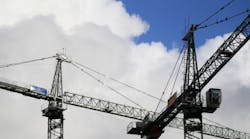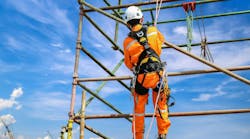The Design-Build Institute of America (DBIA) has released new research findings indicating that for the first time more than half of projects above $10 million are being completed through design-build project delivery. The newly released study confirms that the use of design-build has remained steady since its growth spurt at the end of the last decade, and also that Oregon and the military sector are leading with the most dollars being spent on design-build projects.
“The growing use of design-build is not surprising,” says Lisa Washington, CAE, CEO/Executive Director of DBIA. “Throughout the last five years, and even through the recession, we’ve seen a large increase in demand for information and training on design-build best practices. Owners from all sectors have been turning to design-build delivery because they recognize the inherent value it brings to any project in any sector of any size.”
Shortly before the economic downturn a little over five years ago, the use of design-build spiked from 29% of the non-residential market in 2005 to 36% in 2008. Throughout the recession period, design-build use continued to grow, and now with the economy stable and slowly recovering, the use of design-build has held steady at around 40% for the last three years.
RSMeans analyzed detailed data on nearly 1,000,000 construction projects state by state and found that the West Coast is where design-build is the most prevalent. In fact, 70% of construction dollars being spent in Oregon are on design-build projects. California is the second highest at 59% and Washington the third highest state at 56%. When looking at specific sectors, the military uses design-build on 81% of projects. However, even when military projects are taken out of the equation, Oregon is still the top state due to multifamily residential and industrial sectors’ preference for design-build. Those two industries also lift Michigan to the second place spot in the list of states doing the most non-military design-build.
“The Reed/RSMeans segmentation analysis now includes nine complete years of actual history, statistically supporting observation of trends at the state and industry sector segment levels,” says Tim Duggan, Director of Custom Solutions, Reed/RS Means.
RSMeans’ proprietary database of historical and planning construction projects data served as the basis for the study in addition to the incorporation of other publicly and privately available data sources. A copy of the full report, “Design-Build Project Delivery Market Share and Market Size Report,” is available on DBIA’s website.



